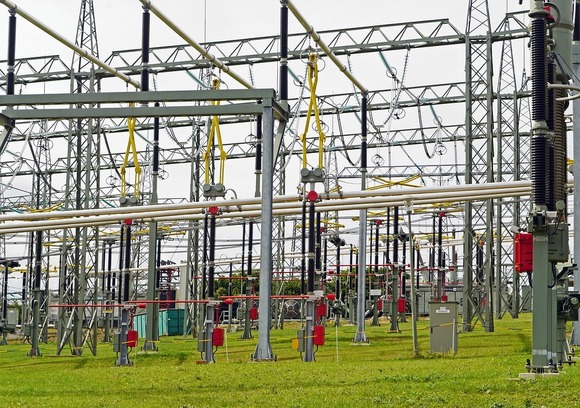An autotransformer is a transformer in which primary and secondary windings are connected to a single core. The current flows in the alternative direction for the primary and secondary coil. The gap between high voltage winding current flow and low voltage winding current flow is equivalent to an overall current flowing from the shared part of the winding.
The transformation ratio is calculated as the correlation between input and output voltage. The primary and secondary winding has the same turn ratio.
The winding sense of both autotransformer windings should be the same for the device's proper functioning. For this, the transformation ratio must be near 1.
Autotransformers have more benefits than conventional transformers. Autotransformers are more compatible, have a small, efficient power supply, have less copper covering, and are budget-friendly.
How Does the Autotransformer Function?
The primary function of the autotransformer is electromagnetic induction. Varying magnetic flux associated with a loop will induce an electromotive force (EMF) across it. A coil and an alternating EMF system produce such a fluctuating magnetic field.
With the alternating current's fluctuating nature, the coil's magnetic field will also fluctuate.
This magnetic flux can be effectively linked to a secondary winding with the help of a core made-up of ferromagnetic materials.
A fluctuating magnetic field will induce an EMF in the secondary coils due to electromagnetic induction.
Since the coil turns are arranged in a series, the net EMF induced across the winding will be the sum of the individual EMF influenced in each turn.
Meanwhile, the same magnetic flux passes through the primary and secondary coils; the EMF per turn for both the primary and secondary coils will be the same.
The EMF per turn for the primary coil and applied input voltage have a relationship.
Step Up Transformer vs. Step Down Transformer
In a step-up transformer, the primary number of coil turns is less than the secondary number.
The power will remain the same. The current will decrease, and the voltage will increase because there are more turns in the secondary winding. The magnetic field is higher on the primary winding.
The primary coil has thick insulated copper covering, whereas the secondary coil has weak insulation. It helps to supply power to transmission lines. For example, generator transmission so voltage can transmit over long distances.
In a step-down transformer, the primary number of coil turns is greater than the secondary number.
The current will increase, and voltage will decrease because there are fewer turns in the secondary winding.
The primary coil is lightly insulated. The secondary coil is thickly insulated because it carries high voltage. It helps to distribute the power to different areas, like transformers in the housing colony.
The same transformers can perform both step-up and step-down transformer functions. It varies on the wiring of the circuit.
It becomes a step-up transformer if the input source is given on the low-voltage circuit. In contrast, if the high-voltage power circuit receives the input signal, the transformer changes into a step-down transformer.
What are the Functions of the Three Phase Autotransformer?
- The low voltage windings are connected in a delta configuration, and the high voltage windings are connected in a star configuration. Thus, the line voltage rises three times on the high voltage side. It is suitable for large-capacity loads.
- The three-phase Autotransformer is highly efficient because it consumes less energy and has minor copper damage.
- Easy to install due to its small size. It is cost-effective as well.
- The transformer's core is made of thin insulated steel laminations to reduce energy loss.
What are the Differences between an Autotransformer and an Isolation Transformer?
- Compared to autotransformers, isolation transformers are more complicated.
- Autotransformers are cheaper than isolated transformers.
- The isolation transformer has better power quality than the autotransformer.
- Autotransformers are smaller and more compatible than isolation transformers.
- There will be no electrical contact between the ground and the circuit of the isolating transformer. The person's body will be safe if the body comes in contact with the circuit. Whereas in Autotransformer, the primary and secondary coil is not isolated resulting in less protection. The isolation transformer is safer to use.
Name: ATO Inc
Address: 23555 Golden Springs DR. I, Diamond Bar, CA 91765 USA
Contact mail: [email protected]
Contact number: +1 800-585-1519
Original Source of the original story >> What are Autotransformers?





